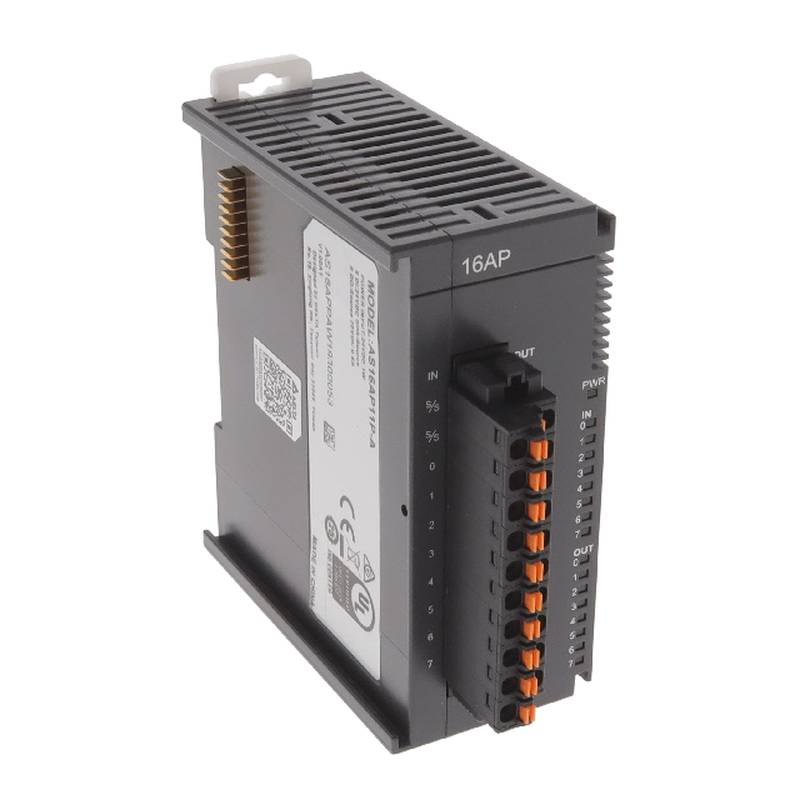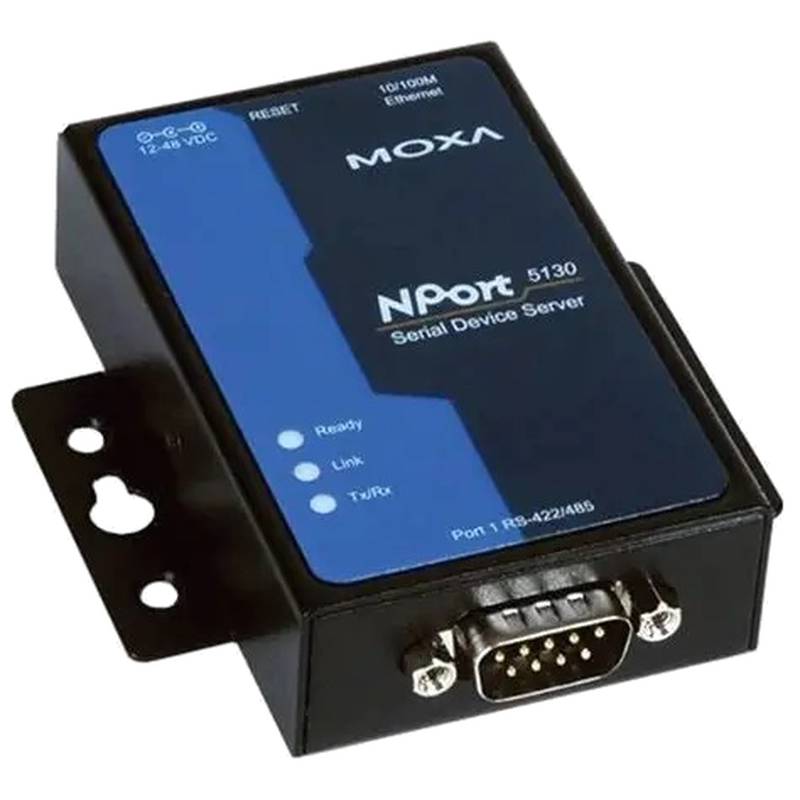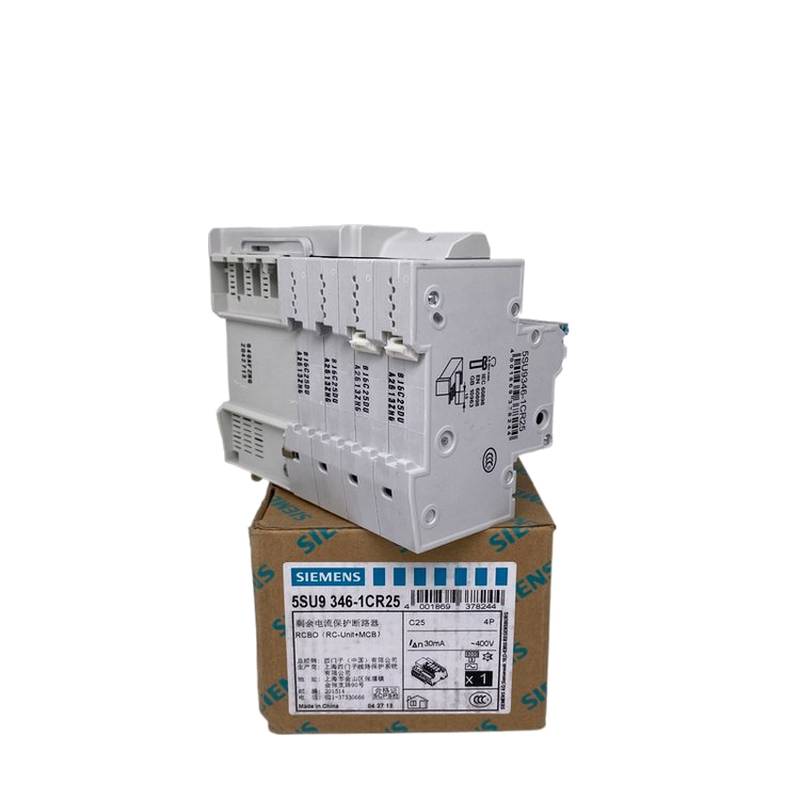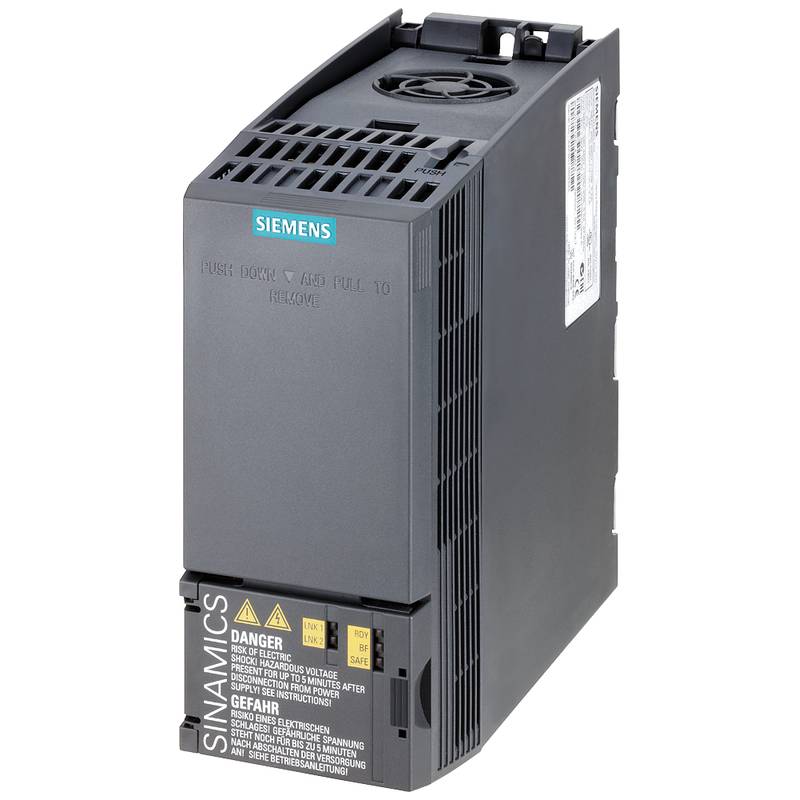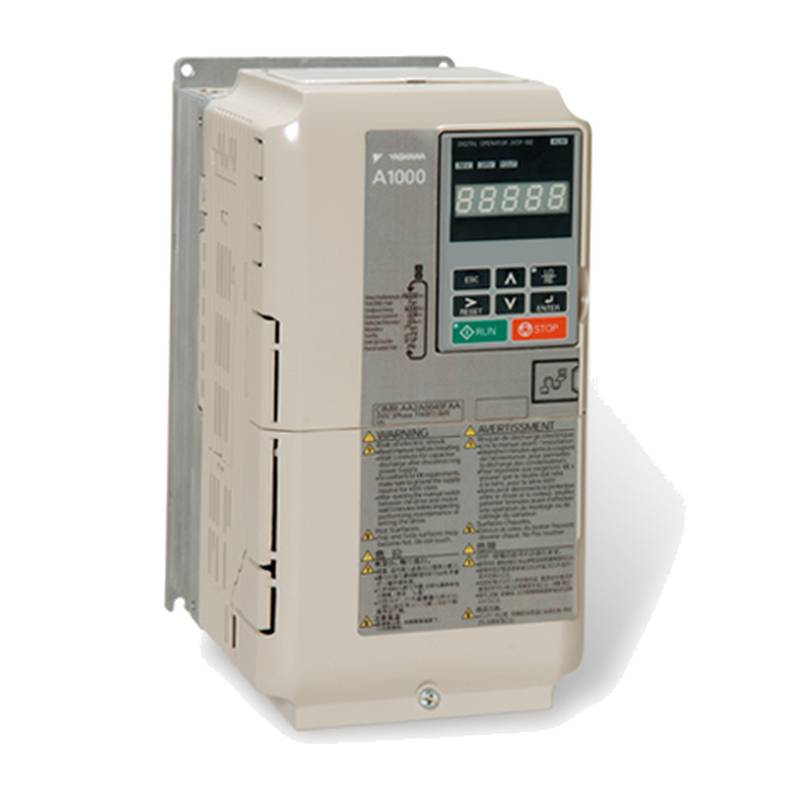
The Siemens 7KT1663 High Performance Industrial Energy Meter stands as a robust solution for precise energy monitoring in demanding industrial environments. Its core advantages lie in its superior accuracy, comprehensive data logging capabilities, and advanced communication interfaces, making it an indispensable tool for optimizing energy consumption and reducing operational costs. Key technical parameters include a voltage range of 300-400V (L-L) and 173-230V (L-N), current ranges up to 5A or 1A with external transformers, and a frequency of 50/60 Hz. This meter excels in providing detailed insights into energy usage patterns, enabling proactive management and ensuring compliance with energy efficiency standards.
Product Specifications
| Feature | Specification |
| :-------------------- | :---------------------------------------------------- |
| Voltage (Line-Line) | 300–400 V AC |
| Voltage (Line-Neutral)| 173–230 V AC |
| Current Input | 5 A (direct) or 1 A (via external transformer) |
| Frequency | 50/60 Hz |
| Accuracy Class (Active Energy) | Class 0.2S / 0.5S (IEC 62053-22) |
| Number of Phases | 3 |
| Communication Interface | Modbus RTU, Modbus TCP, PROFINET (optional) |
| Display | Backlit LCD |
| Mounting | DIN rail |
| Operating Temperature | -25 °C to +55 °C |
| Protection Class | IP20 (enclosure), IP51 (front) |
Core Features & Market Positioning
The Siemens 7KT1663 distinguishes itself through its unparalleled measurement accuracy, achieving Class 0.2S for active energy, which is critical for billing-grade applications and precise cost allocation within industrial facilities. Its multi-tariff functionality and sophisticated load profiling capabilities allow for granular analysis of energy consumption, identifying peak demand periods and opportunities for optimization. The meter's robust design, conforming to stringent industrial standards, ensures reliable operation even in harsh environmental conditions, a key differentiator in the competitive industrial energy meter market. Furthermore, its integration with Siemens' industrial automation platforms provides seamless data flow for advanced analytics and control strategies.
Key Application Scenarios
Industries requiring meticulous energy tracking, such as manufacturing plants, data centers, and large commercial complexes, benefit immensely from the Siemens 7KT1663. It is ideally suited for sub-metering within production lines to monitor the energy consumption of specific machinery or processes, thereby enabling targeted efficiency improvements. Facility managers can deploy the 7KT1663 to gain a comprehensive understanding of building energy usage, facilitating load shedding strategies and peak shaving initiatives. In distributed energy generation scenarios, it accurately measures both consumption and generation, supporting grid balancing and energy trading operations.
Practical System Integration Guidance
Integrating the Siemens 7KT1663 into existing industrial networks is straightforward due to its versatile communication options. For Modbus RTU configurations, standard RS-485 wiring practices should be followed, ensuring proper termination and shielding to maintain data integrity. When utilizing PROFINET, the meter connects directly to the network via an Ethernet cable, requiring configuration within the Siemens TIA Portal or similar engineering software for device integration and data mapping. Power supply connections should adhere to local electrical codes, with appropriate circuit protection installed. Initial setup involves configuring the meter's communication parameters and defining measurement variables for logging and reporting.
Operation and Risk Mitigation
Safe operation of the Siemens 7KT1663 necessitates adherence to established electrical safety protocols. Technicians must ensure all power sources are de-energized before commencing any installation or maintenance work. The meter's internal components carry hazardous voltages, even after the main supply is disconnected, due to capacitor discharge. Regular inspection of wiring and connections helps prevent potential faults. While the 7KT1663 is designed for high reliability, common operational issues might include communication errors, which can often be resolved by verifying wiring, confirming communication settings, and ensuring compatible baud rates. Referencing the official Siemens documentation provides detailed troubleshooting steps for specific error codes displayed on the LCD.
Scalability & Long-Term Value
The Siemens 7KT1663 offers significant long-term value through its inherent scalability and compatibility with future industrial advancements. Its modular communication interfaces allow for upgrades to accommodate evolving network protocols or higher data throughput requirements. The meter integrates seamlessly with Siemens' broader Industrial Internet of Things (IIoT) ecosystem, enabling connection to cloud-based analytics platforms for predictive maintenance and advanced energy management strategies. By providing accurate, detailed energy data, the 7KT1663 empowers organizations to continuously optimize their energy footprint, achieve sustainability goals, and maintain a competitive edge in an increasingly energy-conscious market.
Frequently Asked Questions
What is the primary function of the Siemens 7KT1663 energy meter?
This meter is designed for precise measurement and monitoring of electrical energy. It captures detailed consumption data for industrial and commercial applications. Its accuracy ensures reliable billing and energy management insights.
It offers multi-tariff capabilities for varied energy pricing structures. The device facilitates in-depth analysis of load profiles and peak demand. This helps in optimizing energy procurement and usage strategies effectively.
The 7KT1663 acts as a foundational component for smart grid integration. It supports advanced analytics for operational efficiency gains. Its robust design ensures longevity in demanding environments.
How accurate is the Siemens 7KT1663 energy meter?
The Siemens 7KT1663 boasts a high accuracy class. It achieves Class 0.2S for active energy measurement according to IEC standards. This level of precision is crucial for financial metering and billing purposes.
This superior accuracy allows for precise allocation of energy costs. It helps identify discrepancies and wastage within complex industrial processes. Businesses can rely on this data for accurate reporting.
The meter's calibration and stringent manufacturing ensure consistent performance. This minimizes revenue loss due to measurement inaccuracies. It provides confidence in energy expenditure tracking.
What communication protocols does the Siemens 7KT1663 support?
This energy meter supports common industrial communication protocols. It includes Modbus RTU for serial communication networks. It also offers Modbus TCP for Ethernet-based systems.
For seamless integration into Siemens automation environments, PROFINET is an available option. This enables robust data exchange with PLCs and SCADA systems. It streamlines data acquisition for monitoring.
These versatile protocols ensure compatibility with a wide range of existing infrastructure. They facilitate efficient data logging and remote management. This adaptability is key for modern industrial setups.
Can the Siemens 7KT1663 be used for billing purposes?
Yes, the Siemens 7KT1663 is designed for billing applications. Its high accuracy class of 0.2S is compliant with international metering standards. This ensures reliable and defensible energy billing.
It provides the detailed measurement data required for accurate invoicing. The meter's tamper-proof features add an extra layer of security for billing integrity. This is vital for commercial transactions.
By utilizing this meter, organizations can confidently manage energy costs. It supports transparent energy allocation across different departments or tenants. This enhances financial accountability.
What are the typical installation requirements for the Siemens 7KT1663?
Installation requires mounting on a standard DIN rail. Ensure adequate ventilation around the unit for optimal operating temperature. Follow all local electrical codes and safety regulations during wiring.
Connect the appropriate voltage and current inputs based on your system configuration. Use external current transformers for current ratings above 5A. Verify all connections are secure to prevent loose contacts.
For communication, connect the respective ports (e.g., RS-485 for Modbus RTU, Ethernet for Modbus TCP/PROFINET). Power supply should be stable and within the specified range. Consult the manual for specific wiring diagrams.
How does the Siemens 7KT1663 contribute to energy efficiency?
The meter provides granular data on energy consumption patterns. This allows users to identify high-usage areas or inefficient equipment. Armed with this information, targeted optimization strategies can be implemented.
By monitoring real-time and historical data, operators can detect anomalies. This helps in identifying energy wastage, such as idle machinery or faulty systems. Prompt corrective actions lead to savings.
The multi-tariff and load profiling features enable demand-side management. This allows for shifting loads to off-peak hours, reducing overall energy costs and stress on the grid. It supports proactive energy stewardship.
What is the voltage range supported by the 7KT1663?
The Siemens 7KT1663 supports a wide voltage input range. For line-to-line voltage, it operates between 300V and 400V AC. This covers common industrial three-phase power systems.
For line-to-neutral voltage, the meter is rated for 173V to 230V AC. This is important for understanding system configurations and connections. It ensures flexibility in diverse electrical setups.
It is crucial to ensure your network voltage falls within these specifications. This guarantees accurate measurements and protects the meter from overvoltage. Always verify system voltage before installation.
Does the Siemens 7KT1663 offer data logging capabilities?
Yes, the Siemens 7KT1663 includes comprehensive data logging features. It can record various energy parameters over time. This historical data is essential for trend analysis and performance monitoring.
The meter stores information such as energy consumption, voltage, current, and power factor. These logs can be accessed via its communication interfaces. The duration and frequency of logging are configurable.
This capability aids in identifying energy usage trends and anomalies. It supports detailed reporting for energy audits and efficiency initiatives. Data logging is key for informed decision-making.
What is the role of PROFINET in integrating the 7KT1663?
PROFINET allows for high-speed, deterministic communication. It enables seamless integration into Siemens TIA Portal environments. This simplifies device configuration and data exchange.
It offers robust network diagnostics and management capabilities. PROFINET supports efficient data transfer for real-time monitoring. It is ideal for advanced automation systems.
Integrating via PROFINET enhances system interoperability. It allows for a unified approach to industrial automation and energy management. This connectivity is crucial for IIoT applications.
How can I troubleshoot communication issues with the Siemens 7KT1663?
First, verify the physical wiring of the communication interface. Ensure correct polarity, shielding, and termination for Modbus RTU. For Ethernet-based protocols, check cable integrity and network connectivity.
Next, confirm that the communication parameters match on both the meter and the master device. This includes baud rate, parity, stop bits for serial, or IP addresses and subnet masks for Ethernet. Refer to the product manual for default settings.
If issues persist, try testing with a known working device or cable. Check for any error messages displayed on the meter's screen or logged by the master system. Restarting both devices can sometimes resolve temporary glitches.

















